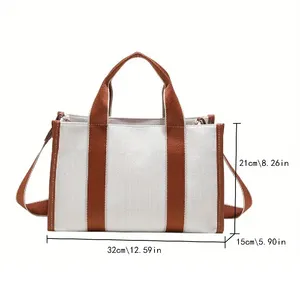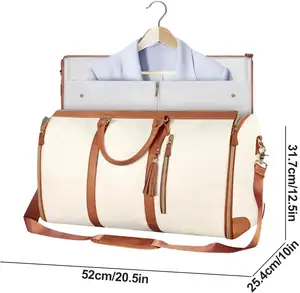Phổ biến trong ngành của bạn


Có thể đảo ngược nhiệt độ cao thay đổi màu sắc tố màu sắc để không màu thermochromic sắc tố bột nhiệt nhạy cảm nhuộm
1,88 ₪ - 3,76 ₪
Đơn hàng tối thiểu: 20 Gram







Jinrunli mua mỹ phẩm cấp siêu màu thay đổi Tắc Kè Hoa kim loại hiệu ứng ngọc trai Duochrome sắc tố
0,9388 ₪ - 1,09 ₪
Đơn hàng tối thiểu: 100 Gram
Vận chuyển mỗi chiếc: 1,09 ₪



Thermochromic sắc tố nhiệt độ thay đổi màu sắc nhiệt nhạy cảm sắc tố thermochromic-sắc tố thermochromic Vải nhuộm
1,88 ₪ - 3,76 ₪
Đơn hàng tối thiểu: 10 Gram







Chất lượng tốt lưu hóa gas tần số cao cảm ứng sợi gốm nóng chảy lò buồng
559,53 ₪ - 747,29 ₪
Đơn hàng tối thiểu: 1 Cái



Nhiệt sắc tố nhạy cảm nhiệt sắc tố nhiệt phản ứng nhiệt sắc tố nhiệt thay đổi nhiệt độ màu nhạy cảm bột
1,88 ₪ - 3,76 ₪
Đơn hàng tối thiểu: 100 Gram







Trung Quốc Chất Lượng Tốt Nhiệt Độ Thấp 500-950C Gốm Men Màu Đen Sắc Tố Cho Trang Trí Thủy Tinh
37,56 ₪
Đơn hàng tối thiểu: 1 Kilogram


Nhiệt Độ Thấp Sứ Sắc Tố Thủy Tinh Gốm Vàng Sắc Tố Vàng
18,78 ₪ - 75,11 ₪
Đơn hàng tối thiểu: 25 Kilogram









Màu Sắc Tố Thủy Tinh Giá Thấp Cho Dây Chuyền Sản Xuất Khảm Thủy Tinh Nóng Chảy Ở Nhiệt Độ Cao
33,80 ₪
Đơn hàng tối thiểu: 25 Kilogram






Bán buôn chất lượng tốt sắt Oxit Đỏ Chrome nhiệt độ thấp gốm sứ sắc tố
2.253,12 ₪ - 4.506,24 ₪
Đơn hàng tối thiểu: 1 Tấn












Hóa chất nhựa nhựa masterbatchs nhiệt độ thấp thay đổi màu sắc thuốc nhuộm sơn lớp phủ thermochromic sắc tố
6,28 ₪ - 9,36 ₪
Đơn hàng tối thiểu: 1 Gram
Các tìm kiếm liên quan:
gốm sắc tố biotitecam bao gồm sắc tố gốmsứ sắc tố cho gốmsắc tố đỏ cho gốmsắc tố cho sứsắc tố gốm và vết bẩngốm sắc tố màu nâusắc tố cho ngành công nghiệp gốm sứsắc tố phát quang cho gốmsắc tố vết gốmcarbon đen sắc tố cho gạch mentrung quốc sắc tố cho gốmsắc tố cho trang trí thủy tinhsắc tố huỳnh quang cho nếnsắc tố vết bẩn cơ thể gốm






Gốm sắc tố/men sắc tố cho nghệ thuật sứ/nhiệt độ thấp 750-900 độ
37,56 ₪ - 56,33 ₪
Đơn hàng tối thiểu: 100 Kilogram






Bán buôn chất lượng tốt sắt Oxit Đỏ Chrome nhiệt độ thấp gốm sứ sắc tố
46,19 ₪ - 48,45 ₪
Đơn hàng tối thiểu: 50 Kilogram
Vận chuyển mỗi chiếc: 173,04 ₪












750-950C Bột Màu Gốm Nhiệt Độ Thấp Pr. Yellow Co Màu Xanh Cho Gốm Trên Men
18,78 ₪ - 63,84 ₪
Đơn hàng tối thiểu: 20 Kilogram






Tốt Mài gốm sứ trung bình và nhiệt độ thấp Gốm Men Flux công nghiệp cấp sắc tố bột màu trắng
18,78 ₪ - 37,56 ₪
Đơn hàng tối thiểu: 1 Kilogram






Lowes Oxit sắt màu đỏ sắc tố (Fe2O3) cho lớp phủ lowes bê tông sơn Oxit sắt bột Oxit sắt
2.253,12 ₪ - 3.755,20 ₪
Đơn hàng tối thiểu: 1 Tấn






Bột Thủy Tinh 350 Độ Bột Sio2 Bột Màu Vô Cơ Màu Trắng Để Đổ Đầy Sơn
563,28 ₪ - 1.877,60 ₪
Đơn hàng tối thiểu: 1 Tấn






Thay Đổi Màu Sắc Sắc Tố Nhiệt Độ Tốt Nhất Ở Bột Nhạy Cảm Nhiệt Độ Thấp
1,13 ₪ - 1,36 ₪
Đơn hàng tối thiểu: 100 Gram






Bột Màu Gốm Nhiệt Độ Thấp 750-950C Pr. Yellow Co Blue Cho Gốm Trên Men
3.755,20 ₪ - 7.510,40 ₪
Đơn hàng tối thiểu: 1 Tấn






Bán Sỉ Bột Màu Đổi Màu Bột Màu Đổi Nhiệt Cho Thuốc Nhuộm Vải, Mỹ Phẩm
47,92 ₪ - 52,43 ₪
Đơn hàng tối thiểu: 1 Túi






Chì Bột Thủy Tinh Điểm Nóng Chảy Thấp Cho Lớp Phủ Chịu Nhiệt Độ Cao
26,29 ₪ - 30,05 ₪
Đơn hàng tối thiểu: 25 Kilogram






Oxit Sắt Lớp Phủ Giá Thấp Màu Đen Fe3o4 722 Chất Màu Sắt Ô Xít
2,93 ₪ - 3,20 ₪
Đơn hàng tối thiểu: 1 Kilogram






Tốt nhất Bán nhiệt độ Thấp Bạc Dẫn Điện dán cho điện sưởi ấm yếu tố
375,52 ₪ - 1.877,60 ₪
Đơn hàng tối thiểu: 1 Kilogram






Gạch Men Trong Suốt Tráng Men Trong Suốt Cho Gạch Lát Sàn
56,33 ₪
Đơn hàng tối thiểu: 1 Kilogram
Vận chuyển mỗi chiếc: 709,74 ₪






Szr920y loạt giá rẻ giá thấp mỹ phẩm trang điểm bóng mắt Tắc Kè Hoa sắc tố bột
0,4507 ₪ - 0,5258 ₪
Đơn hàng tối thiểu: 100 Gram






Bột Màu Mica Nhạy Cảm Nhiệt Độ Thay Đổi 3 Màu MOQ Thấp Cho Giấy Sơn Móng Tay
0,8262 ₪ - 1,17 ₪
Đơn hàng tối thiểu: 50 Gram






Bạch Kim Cảm biến nước bạch kim điện cực dán nhiệt độ cao thiêu kết bạch kim dán
217,81 ₪ - 285,40 ₪
Đơn hàng tối thiểu: 5 Gram
Vận chuyển mỗi chiếc: 14,27 ₪






Bột Phát Sáng Siêu Sáng Phốt Pho Phát Sáng Trong Bột Tối Với Giá Thấp
82,62 ₪ - 93,88 ₪
Đơn hàng tối thiểu: 1 Kilogram






24K lỏng Vàng Vàng Sáng nước nhuộm cho gốm sứ thủy tinh sứ
30,05 ₪ - 48,82 ₪
Đơn hàng tối thiểu: 10 Hộp các tông












Đảm bảo chất lượng của sắc tố Sắt Đen phủ sắt Oxit Đen cho chất nối chịu nhiệt độ cao
2.324,47 ₪ - 3.252,01 ₪
Đơn hàng tối thiểu: 1 Tấn





Sắc tố màu vàng 183 Hữu Cơ sắc tố bột màu vàng cho nhựa trong nhà Polymer paliotol màu vàng K1800/k2270 đục
124,34 ₪ - 129,82 ₪
Đơn hàng tối thiểu: 135 Kilogram






Bột Màu Gốm Hóa Chất Nhiệt Độ Trung Bình Và Thấp Để Sơn Trên Gốm
78,86 ₪ - 90,13 ₪
Đơn hàng tối thiểu: 1 Kilogram






Hill giá thấp Fe2O3 sắc tố màu xanh xây dựng lớp bê tông nhuộm sắt Oxit bột màu xanh
3.342,13 ₪ - 3.567,44 ₪
Đơn hàng tối thiểu: 1 Tấn






Mẫu miễn phí chịu nhiệt độ cao Oxit sắt cho Nhựa/Sơn/lớp phủ Oxit sắt chất lượng cao và giá thấp
2,78 ₪ - 3,53 ₪
Đơn hàng tối thiểu: 5000 Kilogram
Vận chuyển mỗi chiếc: 331,06 ₪












Gốm over-men sắc tố 850 độ nhiệt độ thấp sơn sắc tố cho gốm sứ
8,64 ₪
Đơn hàng tối thiểu: 10 Bộ
Vận chuyển mỗi chiếc: 52,39 ₪






Chuyên nghiệp nhiệt độ thấp men màu sắc vết sắc tố gốm
18,78 ₪ - 131,44 ₪
Đơn hàng tối thiểu: 25 Kilogram
Các danh mục hàng đầu
Giới thiệu về sắc tố gốm nhiệt độ thấp
Dù cho một bữa tiệc cầu kỳ, cho văn phòng hay cho một chuyến đi chơi bình thường, hãy tìm sự hoàn hảo. sắc tố gốm nhiệt độ thấp trên Alibaba.com .. sắc tố gốm nhiệt độ thấp đã trở nên không chỉ là một vật dụng có chức năng để đựng các vật dụng hàng ngày. Bây giờ chúng được coi là một phụ kiện thiết yếu và thường được phối hợp với phần còn lại của trang phục của một người để có một cái nhìn thời trang. Những cái này. sắc tố gốm nhiệt độ thấp thường chứa nhiều phần tô điểm và phần tử thiết kế để nâng cao thương số phong cách của một người.
Các. sắc tố gốm nhiệt độ thấp được cung cấp trên Alibaba.com được làm từ da hoặc vải có chất lượng tốt nhất, để đảm bảo giao diện và cảm nhận cao cấp. Những cái này. sắc tố gốm nhiệt độ thấp có túi, bao, khóa kéo và tay cầm được thiết kế tốt để cung cấp cho người dùng sự tiện lợi tối đa .. sắc tố gốm nhiệt độ thấp có cả kiểu dáng truyền thống và cổ điển cũng như những mẩu tuyên bố kỳ quặc có khả năng thu hút sự chú ý. Những người đam mê thời trang có thể sẽ rất vui mừng bởi hàng loạt các sản phẩm được cung cấp.
sắc tố gốm nhiệt độ thấp có nhiều kích thước và hình dạng khác nhau. Chúng bao gồm từ những món cực kỳ nhỏ dành cho mục đích trang trí đến những món lớn hơn có nhiều vách ngăn và túi cho những người cần mang nhiều đồ .. sắc tố gốm nhiệt độ thấp có sẵn ở dạng rắn cũng như được đính đá quý, đá, và thậm chí cả kim loại quý .. sắc tố gốm nhiệt độ thấp có thể cứng và không linh hoạt hoặc được làm từ vật liệu mềm và co giãn, tùy thuộc vào nhu cầu của người dùng. Chúng có thể trong suốt hoặc có màu đồng nhất và có thể được làm thủ công cẩn thận bằng gương và các vật trang trí khác.
Tăng kho ngoại hình của bạn với phạm vi đáng yêu và hấp dẫn này. sắc tố gốm nhiệt độ thấp có sẵn trên Alibaba.com. Với các ưu đãi và chiết khấu vô cùng hấp dẫn, hãy mua bao nhiêu tùy thích mà không lo vượt quá ngân sách của bạn .. sắc tố gốm nhiệt độ thấp nhà cung cấp và người bán buôn cũng có thể lấy những mặt hàng đáp ứng tốt nhất sở thích của họ với mức ưu đãi tuyệt vời.
Các. sắc tố gốm nhiệt độ thấp được cung cấp trên Alibaba.com được làm từ da hoặc vải có chất lượng tốt nhất, để đảm bảo giao diện và cảm nhận cao cấp. Những cái này. sắc tố gốm nhiệt độ thấp có túi, bao, khóa kéo và tay cầm được thiết kế tốt để cung cấp cho người dùng sự tiện lợi tối đa .. sắc tố gốm nhiệt độ thấp có cả kiểu dáng truyền thống và cổ điển cũng như những mẩu tuyên bố kỳ quặc có khả năng thu hút sự chú ý. Những người đam mê thời trang có thể sẽ rất vui mừng bởi hàng loạt các sản phẩm được cung cấp.
Tăng kho ngoại hình của bạn với phạm vi đáng yêu và hấp dẫn này. sắc tố gốm nhiệt độ thấp có sẵn trên Alibaba.com. Với các ưu đãi và chiết khấu vô cùng hấp dẫn, hãy mua bao nhiêu tùy thích mà không lo vượt quá ngân sách của bạn .. sắc tố gốm nhiệt độ thấp nhà cung cấp và người bán buôn cũng có thể lấy những mặt hàng đáp ứng tốt nhất sở thích của họ với mức ưu đãi tuyệt vời.






















